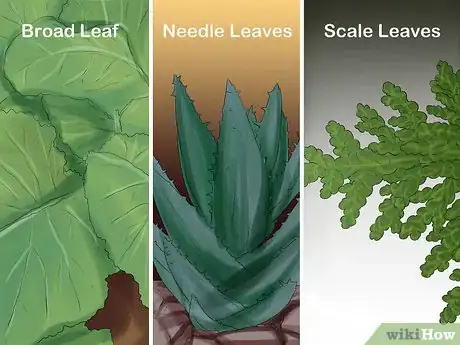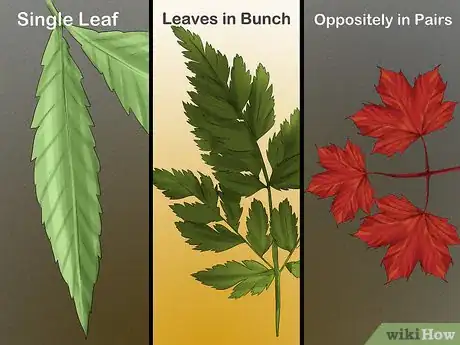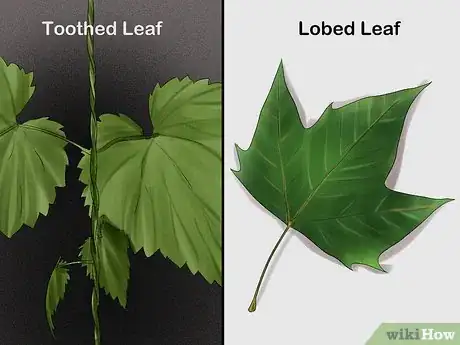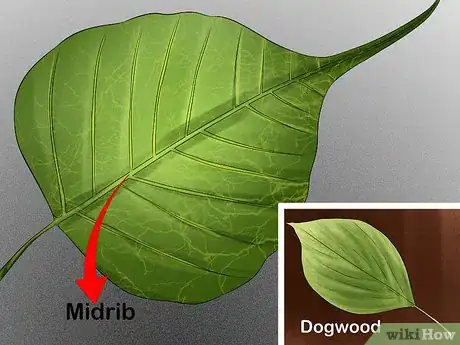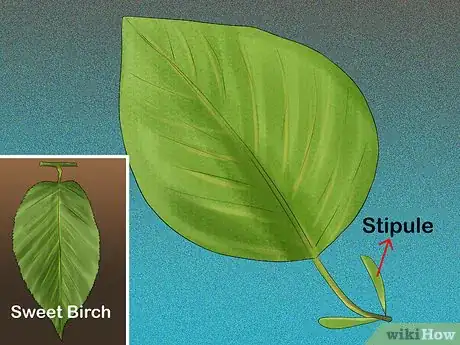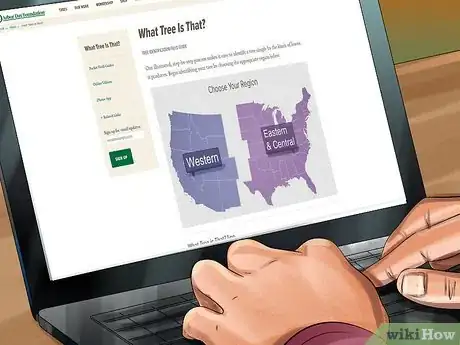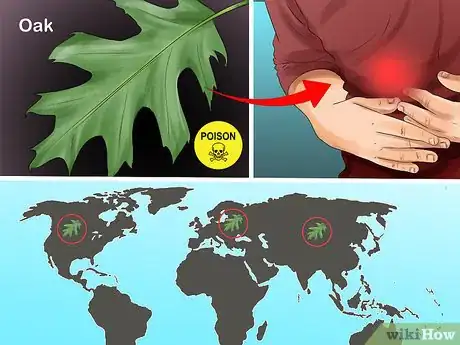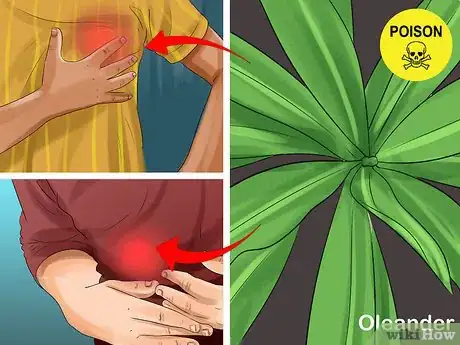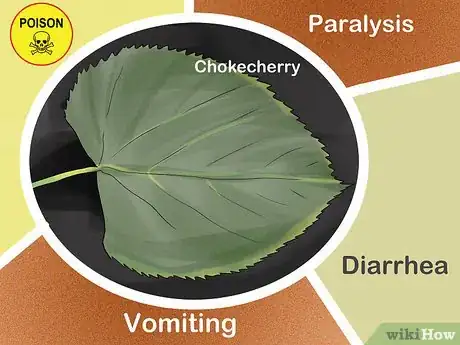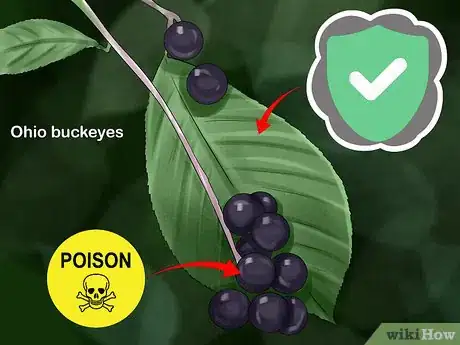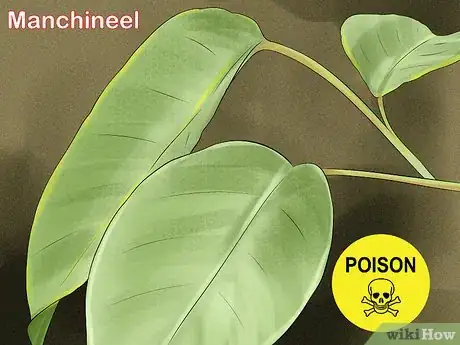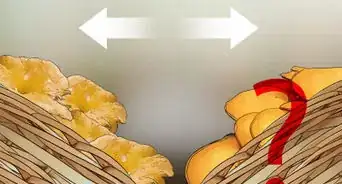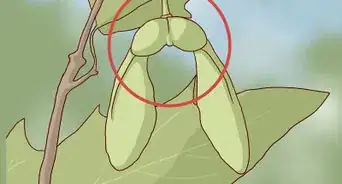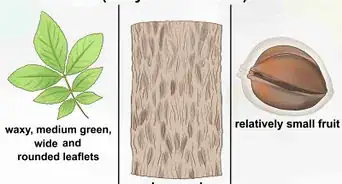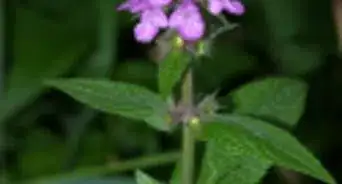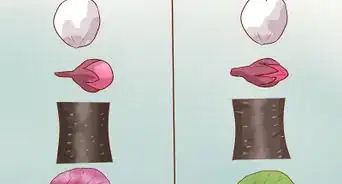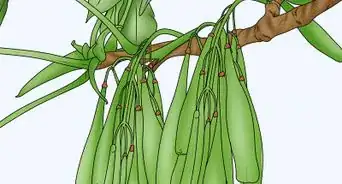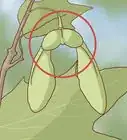This article was co-authored by Michael Simpson, PhD. Dr. Michael Simpson (Mike) is a Registered Professional Biologist in British Columbia, Canada. He has over 20 years of experience in ecology research and professional practice in Britain and North America, with an emphasis on plants and biological diversity. Mike also specializes in science communication and providing education and technical support for ecology projects. Mike received a BSc with honors in Ecology and an MA in Society, Science, and Nature from The University of Lancaster in England as well as a Ph.D. from the University of Alberta. He has worked in British, North American, and South American ecosystems, and with First Nations communities, non-profits, government, academia, and industry.
There are 13 references cited in this article, which can be found at the bottom of the page.
This article has been viewed 54,076 times.
With over 60,000 tree species in the world, identifying a tree that you're unfamiliar with can seem like a daunting task. But because tree leafs are fairly distinct, they can help you narrow the list down. By recognizing a leaf's key characteristics and comparing them to other tree leaves in a plant database, you can determine which tree a leaf belongs to. If you're still not sure what leaf you've found after consulting identification resources, you can always ask an expert.
Steps
Identifying Physical Characteristics
-
1Determine the leaf type. The most common leaf type is a broadleaf, which is wide and flat. But leaves also come in needle, cactus, and scale types. Needle leaves are long and pointed like a pin, cactus leaves are thick and usually covered in spines, and scales leaves are thin, oblong leaves that primarily belong to cypress trees. Compare your leaf to the different basic leaf types to narrow down what species your leaf might be.[1]
- If you have found a needle leaf, for example, it may be from a pine tree.
-
2Study the leaf arrangement.[2] Some leaves are singular, while others are arranged in bunches of 2, 3, or more. Note whether the leaves are arranged in a group or on their own and, if in a group, how many leaves are in each section.
- If you have found leaves arranged oppositely in pairs, for example, you may have found a red maple leaf.
Advertisement -
3Identify the leaf shape.[3] Leaves come in a variety of shapes, and the distinct shape can be key in differentiating one leaf from another. Determine whether the leaf is heart-shaped, linear, oblong, elliptical, or another common leaf shape.
- If you have found a heart-shaped leaf, for example, it may be a black tupelo leaf.
-
4Analyze the leaf's blade edges. Leaf blades differ based on the types of edges surrounding it. Noting whether the leaf has a smooth edge, jagged edge ("toothed"), or an edge that appears to have large chunks taken out of it ("lobed") can help you better search for the leaf online or in field guides.[4]
- If you found a leaf with lobed edges, for example, it may belong to an oak tree.
-
5Look at the leaf's vein patterning. Veins run along the blade in specific patterns that resemble wrinkles or tubes. Compare the markings that the veins make to photos in your field guide or identification app to distinguish between similarly-shaped leaves.[5]
- The "midrib" is the large, raised vein that runs along the center of the leaf. The shape and size of the midrib can help differentiate the leaf from other tree leaves.[6]
- If you have found a leaf with curved veins, for example, it may be a leaf from a dogwood tree.
-
6Check the leaf's petiole, the stalk that connects the leaf to the tree.[7] Petioles can come in different shapes as well as textures. Some are long, thick, and spongy, while others are short, thin, and rigid. Make a list of the leaf's petiole characteristics and compare it against the trees that you see in identification guides.[8]
- If the leaf has a notably short petiole, for example, it might be from a chokecherry tree.
-
7Record whether the leaf has a stipule. Stipules are 2 small flaps that grow at the base of the petiole in some trees. If the tree that you're trying to identify has a stipule, remember that to make spotting the plant in an identification guide easier.[9]
- If your leaf has ovate-shaped stipules, for example, it could be a sweet birch leaf.
-
8Write down the key physical traits of your leaf. You can compare the physical traits as you use plant identification tools to find a match. Include descriptions of the leaf's prominent features, the climate you found it in, and what season it was when you found the leaf.[10]
- Take a few pictures of the leaves so you can compare them to other tree photos later.
Checking Identification Resources
-
1Search for your leaf in a tree field guide. Buy or borrow a field guide that focuses on plants in your region or climate. Compare the plant descriptions and pictures to your tree leaf, then follow up the most likely matches with online research.
-
2Try using a tree identification website. Tree identification sites help users identify tree by entering its characteristics and comparing the results to the thousands of tree species in their database. Use the notes you wrote and pictures you took of your leaf to utilize any of these popular tree ID sites:
- What Tree is This?: https://www.arborday.org/trees/whattree/
- USDA Plant Database: https://plants.usda.gov/java/
- Leaf ID: http://www.leaf-id.com/
- Identify By Leaf: https://tree.oplin.org/page/byleaf
- Discover Life: http://www.discoverlife.org/mp/20q?guide=Trees
-
3Try using a plant ID app. Much like identification websites, smartphone apps work by allowing the user to write descriptions about the tree leaf they have discovered and find the most likely match. Some apps even allow the user to take pictures of the leaf and compare it to others in the app database. Try one of the following popular Plant ID apps:[11]
- Leafsnap
- Virginia Tech Tree ID
- What Tree is That?
- PictureThis
- PlantNet
- Botany Buddy
-
4Visit a local plant nursery or botanist. Someone who has spent years studying plants might be able to help you identify your plant by the leaves. Bring a photo of the tree leaf to a gardening specialist at a plant nursery or a botanist to get a professional opinion on what the plant is.
- Most colleges and universities have a department of biology with at least a few plant specialists.
- If you don't have any botanists or gardening specialists in your area, try posting your question on a message board for plant enthusiasts.
Watching for Common Poisonous Tree Leaves
-
1Recognize oak leaves by their dark green, glossy leaves. Oak leaves and acorns are both poisonous, and they're known to cause agitation, liver damage, and abdominal pain. Oak leaves are usually deeply lobed and a dark, rich green color.[12]
- Oaks can be found in the Americas, Asia, Europe and part of North Africa.
- Oak leaves are poisonous to both humans and most animals, and they should never be grown near livestock.[13]
-
2Watch out for oleander leaves, which grow in pairs or groups of 3. Oleander trees are extremely poisonous and often fatal. Ingesting an oleander leaf or branch can cause heart problems, digestive upset, and even death. Oleander leaves can be identified by their long and thin blades, leathery texture, and tendency to grow in pairs or groups of 3.[14]
- Oleander plants are native to the Mediterranean region but is a common ornamental tree in gardens all over the world.[15]
-
3Note the Ohio buckeyes' broad, bright leaves with jagged edges. Ohio buckeyes are highly poisonous trees that can cause vomiting, diarrhea, dilated pupils, paralysis, and death. The leaves are arranged in pairs of 5-7, resembling fingers on a hand, and are a bright green color with jagged edges.
- Buckeyes are the state tree of Ohio, and the plant is native to the midwestern United States.
-
4Watch for the chokecherry tree's curved veins and short petiole. Although chokecherry berries are safe to eat, every other part of the plant (including the berry pit) is poisonous. Chokecherry leaves are wide and flat, with curved veins, a fine-toothed edge, and a petiole less than 1/3 the length of the entire leaf.
- Chokecherry plants are also poisonous to horses and cattle, causing labored breathing, muscle spasms, and death in extreme cases.[16]
-
5Spot Manchineel leaves by their shiny, fine-toothed leaves. Manchineel trees, among the most poisonous plants in the world, ooze a toxic sap that can cause blistering, respiratory problems, or death in humans. Manchineel leaves can be recognized by their long petiole, shiny yellow-green blade, and thinly serrated edges.
- Manchineel trees are native mainly to the Caribbean and the Gulf of Mexico, though they can also be found in the southern United States.[17]
Expert Q&A
-
QuestionHow do you identify leaves?
 Michael Simpson, PhDDr. Michael Simpson (Mike) is a Registered Professional Biologist in British Columbia, Canada. He has over 20 years of experience in ecology research and professional practice in Britain and North America, with an emphasis on plants and biological diversity. Mike also specializes in science communication and providing education and technical support for ecology projects. Mike received a BSc with honors in Ecology and an MA in Society, Science, and Nature from The University of Lancaster in England as well as a Ph.D. from the University of Alberta. He has worked in British, North American, and South American ecosystems, and with First Nations communities, non-profits, government, academia, and industry.
Michael Simpson, PhDDr. Michael Simpson (Mike) is a Registered Professional Biologist in British Columbia, Canada. He has over 20 years of experience in ecology research and professional practice in Britain and North America, with an emphasis on plants and biological diversity. Mike also specializes in science communication and providing education and technical support for ecology projects. Mike received a BSc with honors in Ecology and an MA in Society, Science, and Nature from The University of Lancaster in England as well as a Ph.D. from the University of Alberta. He has worked in British, North American, and South American ecosystems, and with First Nations communities, non-profits, government, academia, and industry.
Registered Professional Biologist Take a look at the leaves themselves and try to determine whether or not they are broken up into leaflets. Although leaflets can look like individual leaves, they are connected to a central stalk, rather than directly to the tree branch. This arrangement is called a compound leaf, as it is actually a single leaf.
Take a look at the leaves themselves and try to determine whether or not they are broken up into leaflets. Although leaflets can look like individual leaves, they are connected to a central stalk, rather than directly to the tree branch. This arrangement is called a compound leaf, as it is actually a single leaf. -
QuestionWhich trees have lobed leaves?
 Michael Simpson, PhDDr. Michael Simpson (Mike) is a Registered Professional Biologist in British Columbia, Canada. He has over 20 years of experience in ecology research and professional practice in Britain and North America, with an emphasis on plants and biological diversity. Mike also specializes in science communication and providing education and technical support for ecology projects. Mike received a BSc with honors in Ecology and an MA in Society, Science, and Nature from The University of Lancaster in England as well as a Ph.D. from the University of Alberta. He has worked in British, North American, and South American ecosystems, and with First Nations communities, non-profits, government, academia, and industry.
Michael Simpson, PhDDr. Michael Simpson (Mike) is a Registered Professional Biologist in British Columbia, Canada. He has over 20 years of experience in ecology research and professional practice in Britain and North America, with an emphasis on plants and biological diversity. Mike also specializes in science communication and providing education and technical support for ecology projects. Mike received a BSc with honors in Ecology and an MA in Society, Science, and Nature from The University of Lancaster in England as well as a Ph.D. from the University of Alberta. He has worked in British, North American, and South American ecosystems, and with First Nations communities, non-profits, government, academia, and industry.
Registered Professional Biologist White oak leaves have rounded lobes whereas red oaks, like maples, have pointed lobes. Different species of alders also have different-shaped lobes.
White oak leaves have rounded lobes whereas red oaks, like maples, have pointed lobes. Different species of alders also have different-shaped lobes. -
QuestionWhat type of leaves don't have leaflets?
 Michael Simpson, PhDDr. Michael Simpson (Mike) is a Registered Professional Biologist in British Columbia, Canada. He has over 20 years of experience in ecology research and professional practice in Britain and North America, with an emphasis on plants and biological diversity. Mike also specializes in science communication and providing education and technical support for ecology projects. Mike received a BSc with honors in Ecology and an MA in Society, Science, and Nature from The University of Lancaster in England as well as a Ph.D. from the University of Alberta. He has worked in British, North American, and South American ecosystems, and with First Nations communities, non-profits, government, academia, and industry.
Michael Simpson, PhDDr. Michael Simpson (Mike) is a Registered Professional Biologist in British Columbia, Canada. He has over 20 years of experience in ecology research and professional practice in Britain and North America, with an emphasis on plants and biological diversity. Mike also specializes in science communication and providing education and technical support for ecology projects. Mike received a BSc with honors in Ecology and an MA in Society, Science, and Nature from The University of Lancaster in England as well as a Ph.D. from the University of Alberta. He has worked in British, North American, and South American ecosystems, and with First Nations communities, non-profits, government, academia, and industry.
Registered Professional Biologist Simple leaves are not subdivided into leaflets, although they might be deeply lobed. Good examples of trees with simple leaves are oak and maple leaves.
Simple leaves are not subdivided into leaflets, although they might be deeply lobed. Good examples of trees with simple leaves are oak and maple leaves.
References
- ↑ https://courses.lumenlearning.com/boundless-biology/chapter/leaves/
- ↑ Michael Simpson, PhD. Registered Professional Biologist. Expert Interview. 8 September 2021.
- ↑ Michael Simpson, PhD. Registered Professional Biologist. Expert Interview. 8 September 2021.
- ↑ http://www.robinsonlibrary.com/science/botany/anatomy/leafparts.htm
- ↑ https://www.botanical-online.com/lahojaangles.htm
- ↑ https://www.arborday.org/trees/treeguide/glossary.cfm
- ↑ Michael Simpson, PhD. Registered Professional Biologist. Expert Interview. 8 September 2021.
- ↑ https://biologydictionary.net/petiole/
- ↑ http://www.robinsonlibrary.com/science/botany/anatomy/leafparts.htm
- ↑ https://www.woodlandtrust.org.uk/trees-woods-and-wildlife/british-trees/how-to-identify-trees/
- ↑ https://dnr.wi.gov/education/educatorresources/treeid.html
- ↑ http://www1.agric.gov.ab.ca/$department/deptdocs.nsf/all/agdex13352
- ↑ http://www.hobbyfarms.com/5-trees-that-shouldnt-be-planted-near-livestock/
- ↑ https://aggie-horticulture.tamu.edu/earthkind/landscape/poisonous-plants-resources/common-poisonous-plants-and-plant-parts/
- ↑ https://www.britannica.com/plant/oleander
- ↑ http://www1.agric.gov.ab.ca/$department/deptdocs.nsf/all/agdex13352
- ↑ https://www.britannica.com/plant/manchineel
About This Article
One of the easiest ways to identify different kinds of trees is by looking at their leaves. When you're examining a tree's leave, the first thing you should take into consideration is the type of leaves it has. The most common leaf type is a broadleaf, which is large and flat, but there are also needle, cactus, and scale types. You can also study how the leaves are arranged, noting if each leaf is by itself or if they are in bunches. The leaf’s shape can also be a clue, so note whether the leaves are heart-shaped, oblong, elliptical, or something else. Write down all of these characteristics or take a few pictures of the leaves. Then, look for the leaves in a tree field guide or on a tree identification website to identify what kind of tree you're dealing with. To learn how to use a plant ID app to identify a tree by its leaves, keep reading!
